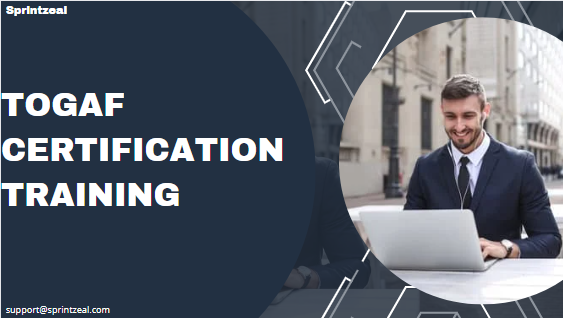
In the rapidly evolving landscape of enterprise architecture, staying competitive requires a deep understanding of frameworks and methodologies that streamline the process of designing, implementing, and managing IT infrastructures. One such framework that has gained significant traction is TOGAF, short for The Open Group Architecture Framework. TOGAF provides a structured approach for designing, planning, implementing, and governing enterprise information architectures.
Obtaining TOGAF Certification not only validates your expertise in enterprise architecture but also opens doors to lucrative career opportunities in various industries worldwide. In this article, we’ll delve into the basics of TOGAF certification and explore some effective strategies to prepare for the examination.
Understanding TOGAF Certification:
What is TOGAF?
TOGAF, developed and maintained by The Open Group, is a comprehensive framework for enterprise architecture. It provides a methodology and set of tools to help organizations develop an IT infrastructure that meets their business objectives. TOGAF encompasses various aspects of enterprise architecture, including business architecture, data architecture, application architecture, and technology architecture.
Why Pursue TOGAF Certification?
TOGAF certification demonstrates your proficiency in enterprise architecture principles and practices. It enhances your credibility in the industry and validates your ability to align IT solutions with business goals effectively. Moreover, TOGAF-certified professionals are in high demand across diverse sectors, ranging from finance and healthcare to telecommunications and government agencies.
Types of TOGAF Certification:
There are two levels of TOGAF certification:
TOGAF Foundation (Level 1): This level verifies your understanding of the basic concepts and terminology of TOGAF. It covers the foundational knowledge required to comprehend the core principles of the framework.
TOGAF Certified (Level 2): The certified level validates your ability to apply TOGAF principles and concepts in real-world scenarios. It requires a deeper understanding of the framework and its applications.
Preparation Strategies for TOGAF Certification:
1. Familiarize Yourself with TOGAF Documentation:
Start by thoroughly reading the TOGAF documentation, including the TOGAF Standard, Version 9.2, and study guides provided by The Open Group. Understand the core concepts, terminology, and structure of the framework. Pay special attention to the Architecture Development Method (ADM), which is the cornerstone of TOGAF.
2. Enroll in TOGAF Training Courses:
Many accredited training providers offer TOGAF certification courses tailored to different learning styles and schedules. These courses provide structured learning modules, expert guidance, and practice exams to help you grasp the intricacies of TOGAF effectively. Choose a reputable training provider with experienced instructors and positive reviews from past participants.
3. Practice with Sample Exams:
Practice exams are invaluable resources for assessing your knowledge and identifying areas that require further review. The Open Group provides official practice exams that closely resemble the format and difficulty level of the actual TOGAF certification exam. Additionally, you can find numerous online platforms offering free and paid TOGAF practice exams to supplement your preparation.
4. Join TOGAF Study Groups:
Collaborating with peers who are also preparing for TOGAF certification can enhance your learning experience. Join online forums, discussion groups, or study circles dedicated to TOGAF certification. Engage in discussions, exchange study materials, and solve practice problems together. Sharing insights and experiences with fellow candidates can boost your confidence and deepen your understanding of TOGAF concepts.
5. Apply TOGAF Concepts in Real Projects:
To solidify your understanding of TOGAF principles, seek opportunities to apply them in your professional projects or case studies. By actively practicing architecture development using TOGAF methodologies, you’ll gain practical insights into its application and refine your problem-solving skills. Document your experiences and reflect on the challenges and lessons learned along the way.
Conclusion:
TOGAF certification is a valuable asset for professionals seeking to excel in enterprise architecture roles. By mastering the fundamental concepts of TOGAF and adopting effective preparation strategies, you can significantly increase your chances of success in the certification exam. Remember to approach your preparation systematically, leverage available resources, and stay committed to continuous learning and improvement. With dedication and perseverance, you’ll be well-equipped to navigate the complexities of enterprise architecture and emerge as a certified TOGAF practitioner.







